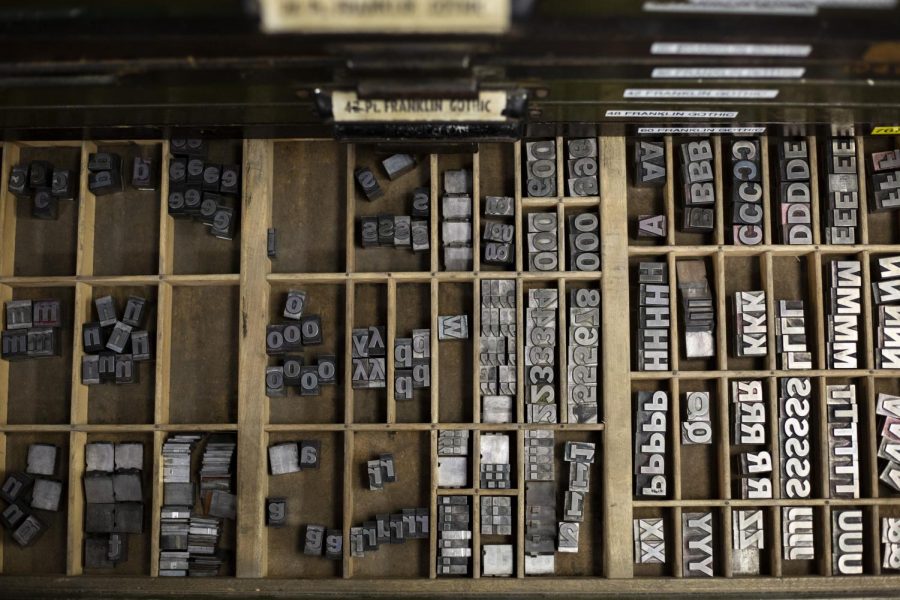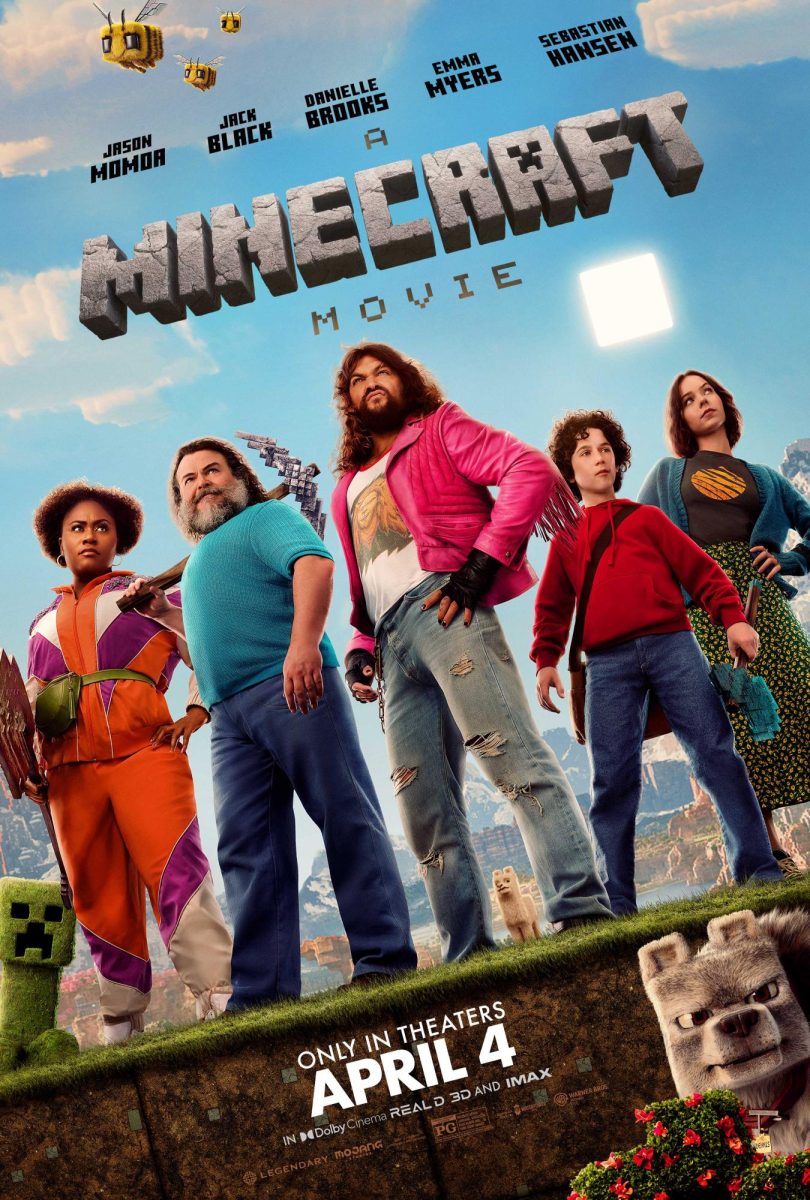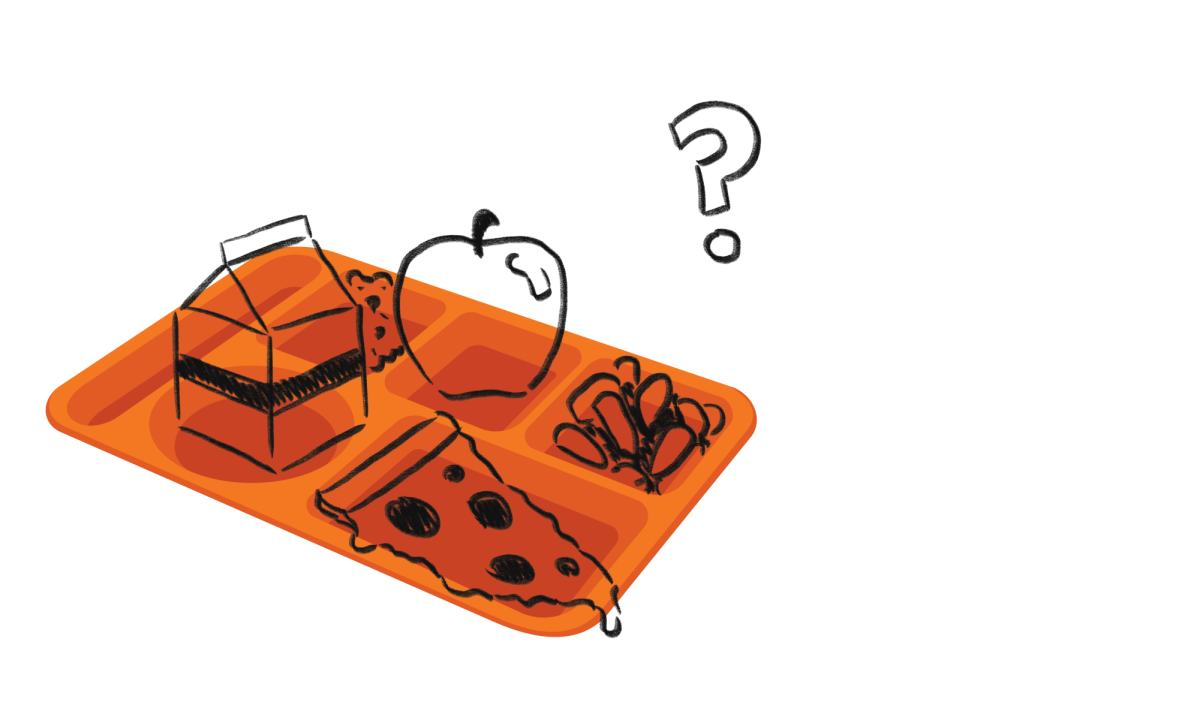Rediscover Physical, Fine Art with Book Arts Program
August 29, 2019
On the fourth floor of the J. Willard Marriott Library, there’s barely any traffic. The quiet atmosphere up there is not only welcome, but required. You see, there’s some important work happening in the solitude — it’s home to the Book Arts Studio. A step inside the glass-encased studio invites you to a museum-esque place, filled with book pressing materials and antique machines which date back as late as the 1800s or 1900s. The studio is home to a nine-person staff as well, all of whom are welcoming and willing to indulge the curious wanderer. It doesn’t take long for the immersive analog world of the Book Arts Program here at the University of Utah to capture your attention. The rhythmic sounds of paper being cut, the letterpresses being used and the scent of ink drying — this world and program is hidden to most students at the U, but it is more than worth your attention.
What is Book Arts?
It’s difficult to define art, as its very definition is subjective to viewers and artists alike. Emily Tipps, program manager and instructor of the Book Arts Program, said, “Book arts is a very broad term — it applies to everything from the content to the production to putting it together.” The start of the book arts initiative at the U can be traced back to 1984 when the Red Butte Press was gifted to the school. The official book arts program was founded in 1995 and nearly 18 years later, the certificate and minor in the program were created. As we near the 25th anniversary, the program has grown significantly. A wide range of classes are offered to students on all things book: bookbinding, letterpress printing, book design, paper making, artist books and several typography courses. Many of these classes fill the requirement for Fine Arts credits and the staff is in the process of getting approval for a BFA in their program as well. A good introduction class to the program is ENGL 2510 – Creative Writing / Book Arts where you’re able to work hands-on with your own writing in the studio.
Book Arts Has Something For Everyone
While the academic points of this program are noteworthy, this is not all there is to it. There are several branches to the program such as the K-12 Outreach Initiative and Open Studio Hours. With its museum-like atmosphere, it’s easy to feel unsure of what exactly happens in the studio.
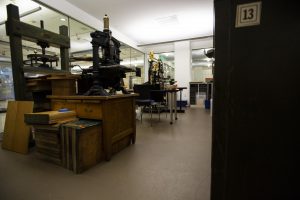
Treasure Chest of Rare Books is a grant-funded program which reaches thousands of kids a year. The program is offered free to schools and coordinators in the program work with teachers to tie lessons on the history of books with the core curriculum. Along with educator workshops, this is one branch of the program that helps get the fine art out into the community.
The Open Studio Hours program is offered to all students who have adequate training in using the many machines and techniques in the studio. Upon submitting a proposal for their project and receiving approval, students pay a fee for their time in the studio and then they can use all the resources the studio has to offer.
The most informative day for the general public is the PRINTappreciation and Open House the program hosts annually. With a tour of the studio and the opportunity to make a letterpress card yourself, it’s the perfect introduction to the program. Although the date is not set for this year, it’s something to look forward to.
Book Arts Redefines the Term “Book”
The beauty of this program does not solely rest in the physical and technical aspects — even if those are an art form in themselves. Amy Thompson, designer and instructor in the program said, “A lot of times people have misconceptions of what we make here. Most of the time we’re making artist books.” Thompson went to school for graphic design and found her way to the book arts program when she realized she missed the fine-arts aspect in her degree. There’s something about physically creating something that sets it apart from other art forms.
An artist book can refer to anything from a sculpture form with few words to a more traditional sense of a book. Book arts combines many fields of fine arts and interests among creators. Ranging from graphic design to stitching together a book, there’s a lot you can do. While the steps of certain processes are set in stone, what artists decide to do with those processes is what makes book arts so unique. Tipps said, “In a way if you have various interests they can come together in a book. You can combine visual and language arts and to me, that’s the best part.”
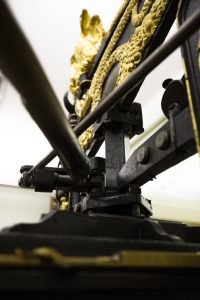
The Book Arts Program offers many opportunities to combine and explore these artistic interests to the general public with the workshops and exhibitions. Led by staff and local, regional and national artists, these workshops vary from specific topics to more general concepts associated with book arts. In the past year alone, there have been workshops offered on papermaking, wire-edge binding and creating mini leather travel journals. A schedule of the workshops for the entire year is released in August and there’s an archive of past workshops available on the program’s website.
In a digital world which is dominated by instant consumption, the Book Arts Program is a refreshing and nostalgic outlet. It not only requires artists to be patient, but it asks them to really think about every aspect of their art while being physically involved in a conscious way. Don’t fall into the misconception that the tedious steps and the precision they require makes this program boring. Nowadays, writing is almost always done digitally. There’s a different feel to pressing a letter into a page by hand, creating words one step at a time. While we do the same on our keyboards, it’s a less conscious process.
As Thompson puts it, “The book is a very forgiving place where there’s a lot of room for play but, also, for exactitude. A book is really a place where you be precise or not. It’s up to the artist.”
p.jayswal@dailyutahchronicle.com


